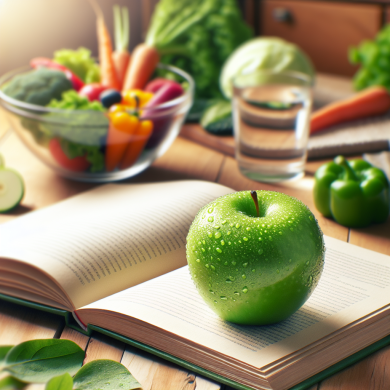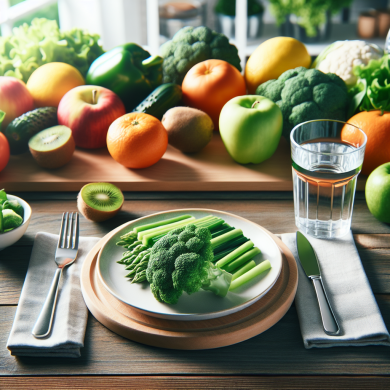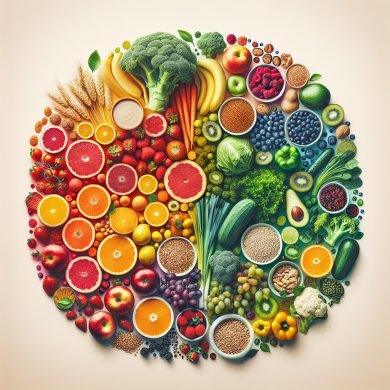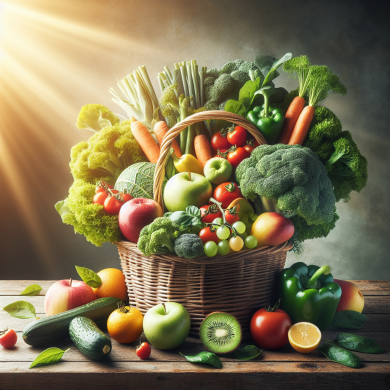Essential Clean Food Diet Grocery List
“`html
Introduction to Clean Eating
Clean eating is not just a diet; it’s a lifestyle choice that emphasizes the consumption of whole, unprocessed foods. At its core, clean eating is about nourishing your body with foods that are as close to their natural state as possible. This approach not only supports optimal health but also promotes sustainable practices and mindfulness about what we consume. A clean food diet grocery list can serve as a foundational tool for anyone looking to embark on this path.
Principles of Clean Eating
Clean eating revolves around a few key principles:
– **Whole Foods**: Prioritize foods that have undergone minimal processing and are free from artificial additives or preservatives.
– **Nutrient Density**: Choose foods rich in vitamins, minerals, and other essential nutrients.
– **Balanced Macronutrients**: Ensure a balanced intake of carbohydrates, proteins, and fats.
– **Mindful Eating**: Pay attention to hunger cues and eat with intention and awareness.
By adhering to these principles, individuals can create a balanced and sustainable diet that promotes overall well-being.
Essential Clean Food Diet Grocery List
Creating a grocery list is a practical step in transitioning to clean eating. Below is a comprehensive list divided into categories, making it easier to navigate your shopping trip.
Fruits and Vegetables
Fruits and vegetables are the cornerstone of a clean food diet. They are packed with vitamins, minerals, fiber, and antioxidants.
– **Leafy Greens**: Spinach, kale, Swiss chard, arugula, and lettuce. These greens are versatile and can be used in salads, smoothies, and as side dishes.
– **Cruciferous Vegetables**: Broccoli, cauliflower, Brussels sprouts, and cabbage. Known for their cancer-fighting properties, these vegetables are a must.
– **Colorful Vegetables**: Bell peppers, carrots, beets, and sweet potatoes. Their vibrant colors indicate a high content of phytonutrients.
– **Berries**: Blueberries, strawberries, raspberries, and blackberries. Rich in antioxidants, berries are excellent for snacking or adding to cereals and desserts.
– **Citrus Fruits**: Oranges, lemons, limes, and grapefruits. These fruits are high in vitamin C and can enhance the flavor of many dishes.
– **Other Fruits**: Apples, bananas, pears, and avocados. These are great for snacking and can add natural sweetness to various recipes.
Whole Grains
Whole grains are an excellent source of complex carbohydrates, fiber, and essential nutrients.
– **Quinoa**: A complete protein that is gluten-free and high in fiber.
– **Brown Rice**: A whole grain that is more nutritious than white rice.
– **Oats**: A heart-healthy grain that can be used in breakfast bowls and baking.
– **Barley**: High in fiber, barley can be added to soups and stews.
– **Whole Wheat Pasta**: A better alternative to refined pasta, offering more nutrients and fiber.
Protein Sources
Protein is essential for building and repairing tissues and should be a staple in any clean eating plan.
– **Lean Meats**: Chicken breast, turkey, and lean cuts of beef. These provide high-quality protein with less saturated fat.
– **Fish and Seafood**: Salmon, mackerel, sardines, and shrimp. Rich in omega-3 fatty acids, these are heart-healthy options.
– **Eggs**: A versatile and complete protein source.
– **Legumes**: Lentils, chickpeas, black beans, and kidney beans. These are great plant-based protein sources rich in fiber.
– **Nuts and Seeds**: Almonds, walnuts, chia seeds, and flaxseeds. These are excellent for snacking and adding healthy fats to meals.
– **Tofu and Tempeh**: Plant-based proteins that are versatile and can be used in a variety of dishes.
Dairy and Dairy Alternatives
Dairy products and their alternatives can provide calcium and other essential nutrients.
– **Greek Yogurt**: High in protein and probiotics, it’s a great option for breakfast or snacks.
– **Milk**: Opt for organic, grass-fed varieties or plant-based alternatives like almond, soy, or oat milk.
– **Cheese**: Choose options like feta, mozzarella, or cottage cheese, which are lower in fat.
– **Butter and Alternatives**: Use grass-fed butter in moderation or consider alternatives like ghee or coconut oil.
Healthy Fats
Incorporating healthy fats into your diet is crucial for heart health and hormone production.
– **Olive Oil**: A staple in the Mediterranean diet, it’s great for cooking and dressings.
– **Coconut Oil**: Ideal for baking and high-heat cooking.
– **Avocados**: Provide monounsaturated fats and can be used in salads, spreads, or as a topping.
– **Nuts and Seeds**: As mentioned earlier, these are not only protein sources but also excellent for supplying healthy fats.
Herbs and Spices
Enhance the flavor of your dishes without relying on processed sauces or additives.
– **Herbs**: Basil, cilantro, parsley, dill, and mint. Fresh herbs can elevate the taste of any dish.
– **Spices**: Turmeric, cinnamon, cumin, and paprika. Spices add depth and complexity to meals and offer health benefits like anti-inflammatory properties.
Condiments and Extras
Choose condiments that are free from preservatives and artificial ingredients.
– **Vinegars**: Balsamic, apple cider, and red wine vinegar for dressings and marinades.
– **Mustard**: A low-calorie option that adds flavor without the need for added sugar.
– **Nut Butters**: Almond butter, peanut butter, and tahini. Ensure they are free from added sugars and hydrogenated oils.
– **Honey and Maple Syrup**: Natural sweeteners that can be used sparingly.
Shopping Tips for Clean Eating
Adopting a clean eating lifestyle can be simplified with some strategic shopping tips:
– **Shop the Perimeter**: Focus on the outer aisles of the grocery store where fresh produce, meats, and dairy are typically located.
– **Read Labels**: Avoid products with long ingredient lists or those containing artificial additives.
– **Seasonal and Local**: Whenever possible, opt for seasonal and locally produced foods, which are often fresher and more nutrient-rich.
– **Plan Ahead**: Create a weekly meal plan and grocery list to avoid impulse purchases and ensure you have the necessary ingredients on hand.
Conclusion
Transitioning to a clean food diet can be a rewarding endeavor that promotes health and well-being. By focusing on whole, nutrient-dense foods and creating a well-thought-out grocery list, you can simplify the process of clean eating. Remember, the goal is not to strive for perfection but to make informed choices that support a balanced and sustainable lifestyle. Embrace the journey and enjoy the myriad benefits that clean eating has to offer.
“`















Add comment